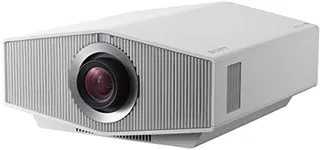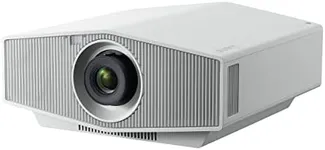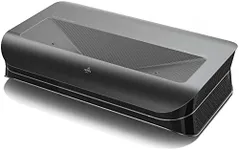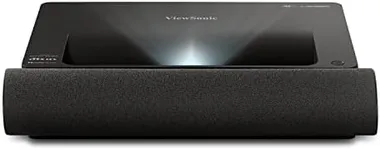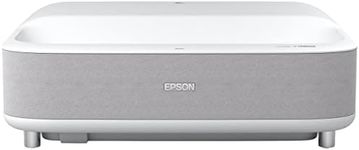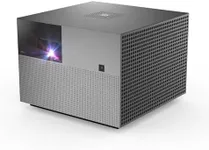Buying Guide for the Best Sony Short Throw Projectors
When choosing a Sony short-throw projector, it's important to consider several key specifications to ensure you get the best fit for your needs. Short-throw projectors are designed to project large images from a short distance, making them ideal for small spaces or for reducing shadows in presentations. Understanding the key specs will help you make an informed decision and get the most out of your projector.Throw RatioThe throw ratio is the distance from the projector to the screen divided by the width of the image. This spec is crucial because it determines how close you can place the projector to the screen while still achieving the desired image size. Short-throw projectors typically have a throw ratio of less than 1:1. For example, a throw ratio of 0.5:1 means you can place the projector half the width of the screen away. If you have limited space, look for a lower throw ratio. If you have more flexibility in placement, a slightly higher throw ratio might be acceptable.
Brightness (Lumens)Brightness, measured in lumens, indicates how much light the projector can produce. This is important because it affects the visibility of the projected image, especially in well-lit rooms. For home theaters or dark rooms, 1500-2500 lumens may be sufficient. For classrooms or conference rooms with some ambient light, 2500-3500 lumens is recommended. For very bright environments, look for projectors with 3500 lumens or more. Choose a brightness level based on the lighting conditions of the room where you will use the projector.
ResolutionResolution refers to the number of pixels that make up the image, typically described as width x height (e.g., 1920x1080 for Full HD). Higher resolution means more detail and clarity. For general use, a resolution of 1280x720 (HD) may be adequate. For more detailed images or larger screens, consider 1920x1080 (Full HD) or even 3840x2160 (4K) for the best image quality. Choose a resolution based on the type of content you will be projecting and the level of detail you require.
Contrast RatioThe contrast ratio measures the difference between the darkest and brightest parts of the image. A higher contrast ratio means deeper blacks and more vibrant colors, which is important for image quality. Ratios like 1000:1 are on the lower end, while 10000:1 or higher are considered excellent. If you plan to use the projector for movies or detailed presentations, a higher contrast ratio will provide a better viewing experience. For basic presentations, a lower contrast ratio may be sufficient.
Connectivity OptionsConnectivity options refer to the types of input and output ports available on the projector, such as HDMI, USB, VGA, and audio ports. This is important because it determines what devices you can connect to the projector. Ensure the projector has the necessary ports to connect to your laptop, gaming console, Blu-ray player, or other devices. If you plan to use multiple devices, look for a projector with multiple HDMI ports or wireless connectivity options like Bluetooth or Wi-Fi.
Keystone CorrectionKeystone correction is a feature that allows you to adjust the image to be perfectly rectangular, even if the projector is not perfectly aligned with the screen. This is important for achieving a professional-looking image without distortion. Manual keystone correction requires you to adjust the settings yourself, while automatic keystone correction adjusts the image automatically. If you frequently move the projector or use it in different locations, automatic keystone correction can save time and effort.
Lamp LifeLamp life indicates how long the projector's lamp will last before it needs to be replaced, usually measured in hours. This is important for maintenance and long-term costs. Typical lamp life ranges from 2000 to 5000 hours, with some models offering up to 10,000 hours or more in eco mode. If you plan to use the projector frequently, look for a model with a longer lamp life to reduce the frequency and cost of replacements.
